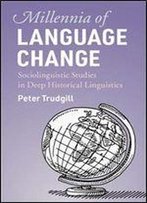
Performing Queer Modernism
by Penny Farfan /
2017 / English / PDF
6.7 MB Download
Focusing on some of the best-known and most visible stage plays and
dance performances of the late nineteenth- and early
twentieth-centuries, Penny Farfan's interdisciplinary study
demonstrates that queer performance was integral to and productive
of modernism, that queer modernist performance played a key role in
the historical emergence of modern sexual identities, and that it
anticipated, and was in a sense foundational to, the insights of
contemporary queer modernist studies. Chapters on works from Vaslav
Nijinsky's
Focusing on some of the best-known and most visible stage plays and
dance performances of the late nineteenth- and early
twentieth-centuries, Penny Farfan's interdisciplinary study
demonstrates that queer performance was integral to and productive
of modernism, that queer modernist performance played a key role in
the historical emergence of modern sexual identities, and that it
anticipated, and was in a sense foundational to, the insights of
contemporary queer modernist studies. Chapters on works from Vaslav
Nijinsky'sAfternoon of a Faun
Afternoon of a Faun to Noël Coward's
to Noël Coward'sPrivate Lives
Private Lives highlight manifestations of and suggest ways
of reading queer modernist performance. Together, these case
studies clarify aspects of both the queer and the modernist, and
how their co-productive intersection was articulated in and through
performance on the late-nineteenth- and early-twentieth-century
stage.
highlight manifestations of and suggest ways
of reading queer modernist performance. Together, these case
studies clarify aspects of both the queer and the modernist, and
how their co-productive intersection was articulated in and through
performance on the late-nineteenth- and early-twentieth-century
stage.Performing Queer Modernism
Performing Queer Modernism thus contributes to an
expanded understanding of modernism across a range of performance
genres, the central role of performance within modernism more
generally, and the integral relation between performance history
and the history of sexuality. It also contributes to the ongoing
transformation of the field of modernist studies, in which drama
and performance remain under-represented, and to revisionist
historiographies that approach modernist performance through
feminist and queer critical perspectives and interdisciplinary
frameworks and that consider how formally innovative as well as
more conventional works collectively engaged with modernity, at
once reflecting and contributing to historical change in the
domains of gender and sexuality.
thus contributes to an
expanded understanding of modernism across a range of performance
genres, the central role of performance within modernism more
generally, and the integral relation between performance history
and the history of sexuality. It also contributes to the ongoing
transformation of the field of modernist studies, in which drama
and performance remain under-represented, and to revisionist
historiographies that approach modernist performance through
feminist and queer critical perspectives and interdisciplinary
frameworks and that consider how formally innovative as well as
more conventional works collectively engaged with modernity, at
once reflecting and contributing to historical change in the
domains of gender and sexuality.











